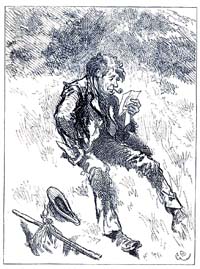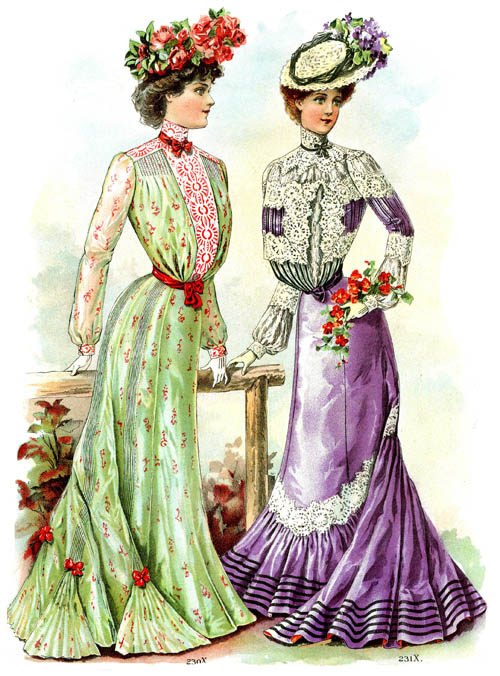|
Home > Victorian Social Issues > The Victorian Tramp

|
The "tramp" was a figure well known to the average Victorian. But just what was a "tramp"? Opinions varied. Some regarded the tramp or hobo as a romantic figure, who had chosen the life of the open road over the humdrum world of work. Some felt that many (though not all) tramps were simply men who would work if they had the opportunity - and that they would happily give up the wandering life if offered jobs. Others regarded tramps as lowly vagrants, living the "tramping" life because they were unwilling or too lazy to work. The truth is probably, simply, that there is no single definition that applies to all those who fell under the label of "tramps." But perhaps the most comprehensive effort to understand tramps and the tramping life was the series of articles written for Century Magazine by Josiah Flynt - which led to this little poem published in Century in 1896:
| |
The Tramp - by Philip J. Morse
I dare not with denial cold
Bid him begone, but watch each mood,
As by the kitchen fire he sits
And calmly eats his food.
Methinks that in his jaded eye
A softer light beams now and then;
He can't be altogether bad
This outcast among men.
At all events, I am resolved
His evening meal I will not stint,
For there's a possibility
He might be Mr. Flynt.
|
- Trade Tramps
(Leisure Hour, 1868)
- "By trade tramps the reader will understand those travelling artisans and craftsmen who perambulate the country ostensibly in search of employment. They are an entirely distinct class from the tramps who have no trade, from whom they for the most part keep aloof, with a feeling, it may be, that too close a contact with them would lower their respectability."
- Unskilled Tramps
(Leisure Hour, 1868)
- "We shall now turn our attention for a few moments to ...the unskilled tramp, who has followed no particular calling... and has no intention of following any. The first fact that strikes us in connection with this subject is the enormous number of supernumaries which at all times and seasons abound in our towns and country-places, and are ever turning up whether they are wanted or no."
- Tramps and Vagrants
(Leisure Hour, 1868)
- "It is estimated that there are no less than thirty thousand vagrants in this country moving about from place to place. They would decline the best situation, and sacrifice the fairest prospects, rather than devote themselves to any fixed industrial occupation. Their peculiar study, therefore, is how to get a livelihood under the condition of never being at rest."
- Drawn From Life: Vagabonds
(Cassell's Family Magazine, 1875)
- Vagrant Parsons
(Century Magazine, 1883B)
- "We are frequently hearing of questionable characters who have suddenly come from nobody knows where, and have hoisted themselves into vacant pulpits, where, for awhile, they subsist, feeding the flock with such moldy fodder as they can manage to scrape together, borrowing all the money they can, often robbing the weak and unwary... and finally going away, usually in some haste..."
- On the Tramp, by Edwin Goadby (Cassell's Family Magazine, 1885)
- Waife, Junior, by Edwin Goadby (Cassell's Family Magazine, 1885)
- A profile of a poetic tramp.
- Life Among German Tramps, by Josiah Flynt
(Century Magazine, 1893B)
- Tramping with Tramps, by Josiah Flynt
(Century Magazine, 1894A)
- "The purpose of this article is to give an account of tramp traits, successes, and failures in this land of freedom." The author looks at (and engages in) the lives of tramps in different parts of the country, examining their migrations, how they are treated, and how they live.
- The Tramp at Home, by Josiah Flynt
(Century Magazine, 1894A)
- "At home" in this case refers to the tramp in New York.
- The City Beggar, by Josiah Flynt
(Century Magazine, 1894A)
- "To-day we have all sorts of hoboes. There are house-beggars, office beggars, street-beggars, old-clothes-beggars, and of late years still another specialization has become popular in vagabondage. It is called 'land-squatting,' which means that the beggar in question has chosen a particular district for his operations."
- What to Do with the Tramp, by Josiah Flynt
(Century Magazine, 1894B)
- The Whipping-Post for Tramps, by C.S. Denny, Mayor of Indianapolis
(Century Magazine, 1895A)
- The author sincerely recommends public floggings as a means of "getting rid of" tramps.
- Tribulations of a Cheerful Giver, by William Dean Howells
(Century Magazine, 1895B)
- An interesting essay on when, whether, and how much to give to beggars.
- Two Tramps in England, by Josiah Flynt
(Century Magazine, 1895B)
- How Men Become Tramps, by Josiah Flynt
(Century Magazine, 1895B)
- The conclusion of Flynt's series on tramps in America and Europe, subtitled "conclusions from personal experience as an amateur tramp."
|
Visit Our Victorian Shop
for:
Books
Coloring Books
Beautiful Spiral Journals
Holiday Greeting Cards
|
|


 Discover thousands of Victorian images in our
Discover thousands of Victorian images in our 